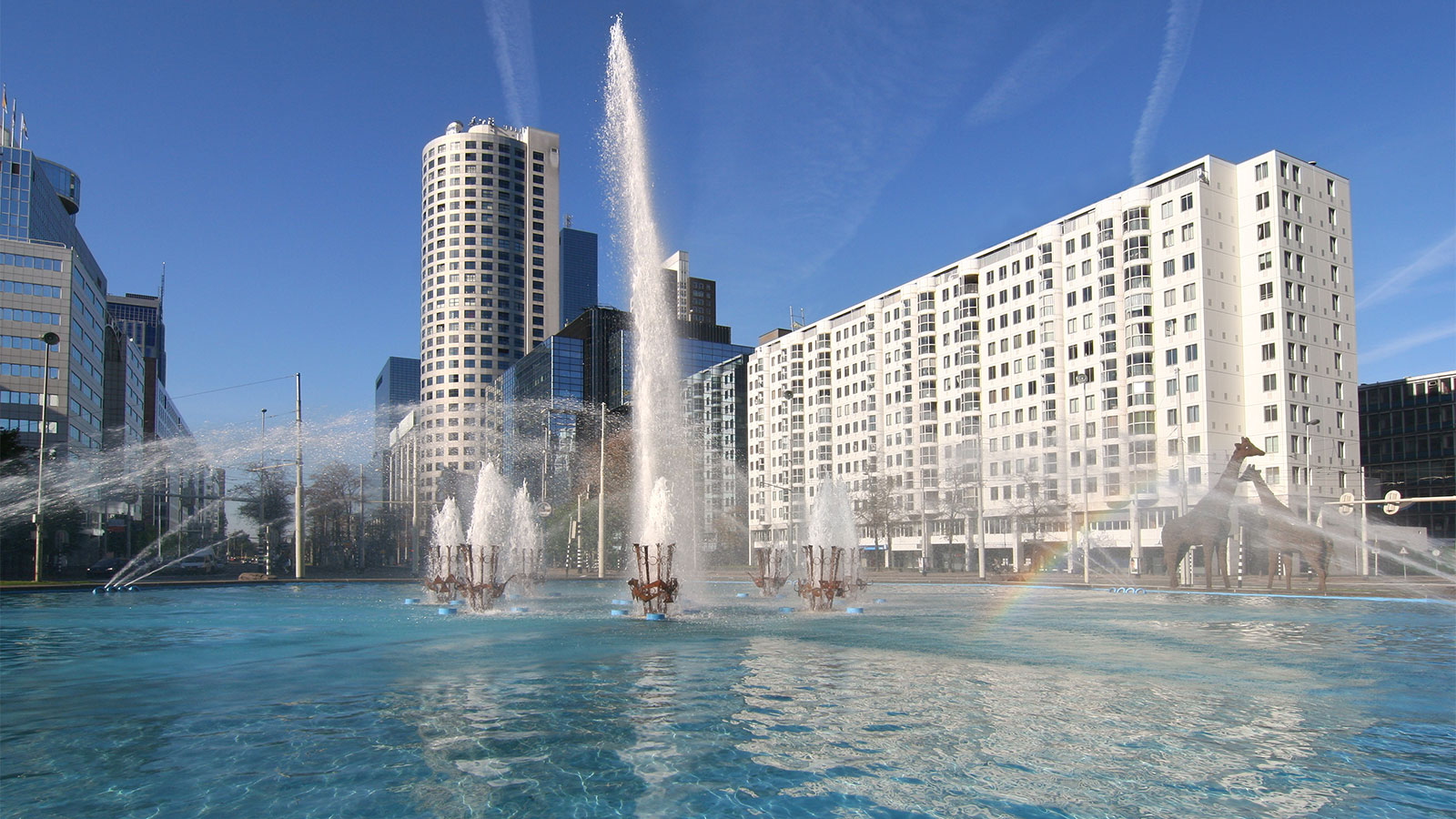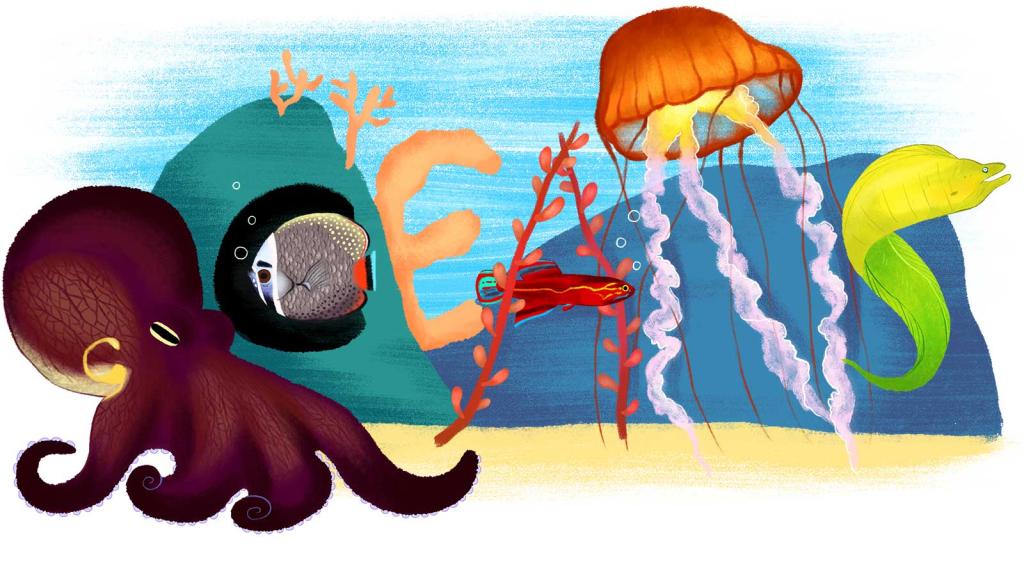If you live in a city, and happen to be reading this on a phone, go outside. (I would join you, but — surprise! — it’s raining here in Seattle.) Walk in a general downhill direction — go on, you could probably use the fresh air — and chances are you’ll end up at a waterfront sooner or later; half of the world’s population and three-quarters of all major cities are within 40 miles of a coast.
There’s a reason that most big cities in human history have popped up near harbors and major river ports: Many of the technologies that make cities possible are dependent on having a body of water nearby, including food gathered from the sea instead of farmed on limited urban land, cheap waste treatment, and accessible international shipping.
Meanwhile, the mechanisms of urban life (predictably) have some less-than-awesome effects on the oceans, like pollution and overfishing, not to mention global warming and ocean acidification. Let’s call it “ocean sprawl.” But just as we turn to cities to lead the charge on climate change, they may also be the key to restoring ocean health.
“It’s been striking me that there’s such a gap between those two profound qualities of Planet Earth,” says Timothy Beatley, professor of urban and environmental planning at the University of Virginia, who, as head of the Biophilic Cities Project, is interested in how nature and cities can fit together.
In his most recent book, Blue Urbanism, Beatley examines the tight fit between cities and their nearby oceans, which includes everything from waste management to transportation to storm surge, and lays out a blueprint for how cities can help solve the problems of the oceans. “If we’re going to save oceans and save ourselves, it has to be driven by cities and the leadership of those living in cities.”
So what does a “blue” city look like?
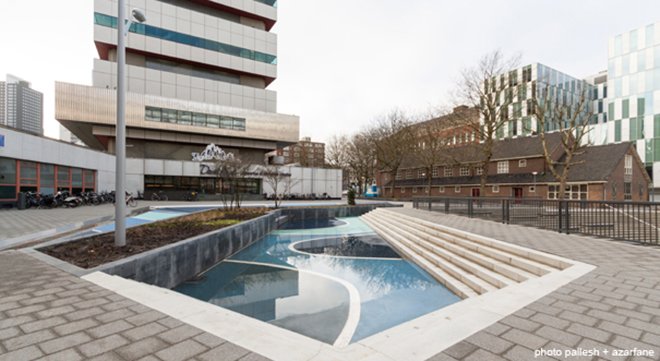
De UrbanistenA “water plaza” in Rotterdam, where public park meets storm water management.
The best example lies in the low-lying Netherlands, in Rotterdam, where age-old negotiations between the city and the sea look chicly new. With storm water management dressed up as a lovely urban park, the city can capture some of the water from torrential rainfall instead of shuttling it into quickly overloaded storm drains. This “water plaza” can hold up to 450,000 gallons of rain water, but it’s not just a giant bathtub — it is designed to move water playfully through cascading channels like streams, forming pools and fountains that become an attraction. When things dry out again, the square also serves as a basketball court, a skate park, and an amphitheater.
Other emergency water storage facilities in the works include unused parking lots and green roofs, which could serve as cisterns during dryer times. Every municipal building in Rotterdam comes with a green roof, which sounds downright pleasant as well as water-smart. No wonder a Dutch team was called in to help the city of New Orleans draft its new water plan, called Living with Water, which supplements an overburdened system of levies and pumps with new water storage sites and natural infrastructure to help contain and filter floodwater.
To go bluer, cities will also need to pay attention to what they’re flushing into the sea — from municipal waste to plastics. Let’s assume that the benefits of not flushing your sewers straight into the ocean are largely understood by now, and move on to the plastic problem. In San Francisco, a ban on plastic bags may keep as many as a million pieces of plastic out of the Bay every year. Many other cities and states have followed suit, including the rest of California, Seattle, Portland, Chicago, and parts of coastal North Carolina. Beatley even imagines a future world where coastal cities take ownership of offshore pollutions — maybe Honolulu, Los Angeles, and Tokyo all chip in on cleaning up the Pacific Gyre, for example.
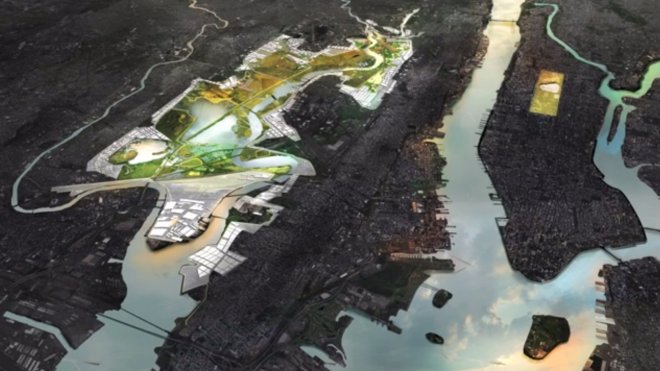
MIT CAU + ZUS + URBANISTEN with Deltares; 75B; and Volker Infra DesignThe New Meadowlands project will restore the marshlands between New Jersey and New York, as depicted in this cinematically colorful rendering.
Then there’s the flip side of coastal urban planning: risk assessment. “In urban planning, we’ve often thought about that shoreline edge as being a place of danger,” Beatley points out. But these border zones can also be places of renewal and health, in the same way public parks contribute to quality of life in a city.
Projects like the New Meadowlands, the winning entry in New York’s Rebuild by Design challenge in the wake of Hurricane Sandy, is one such project poised to reap the two-for-one rewards of restoring marshlands around New Jersey and New York, as both an accessible nature reserve and a natural buffer for storm surge when the next one hits. With an intricate system of berms to absorb floodwater, bus rapid transit lines to provide access to the park, and a focus on urban development — as opposed to the low-density zoning that currently lines the inside edge of the park — the New Meadowlands win a solid blue-green star from us.
But any of this is hard to do if you can’t get people to look at their local oceans as part of their habitats. Storms bring the sea to our doorsteps, but we have a collective tendency to forget about the water when it’s gone. An important step in correcting landlubbers’ nearsightedness, Beatley suggests, is to fix our mental maps.
“Maps solidify the prevailing view of the world,” he says. Instead maps of coastal cities that end at the shoreline, they could extend out into the waters, to show where kelp forests outside of Los Angeles are as magnificent as the redwoods outside of San Fran, or where deep-water reefs lie largely unexplored off the coast of Trondheim, Norway, or the tracts of ocean where orca whales migrate by Seattle and Vancouver.
And if you can’t get people to literally go into the ocean, bring the ocean to them. Beatley suggests volunteer programs at waterfronts or aquariums that encourage people to explore and learn about their tidelines, or ocean “sister cities” that help citizens engage with specific ecosystems. What’s that? You’ve never heard of your city’s sister city? Well, maybe you would know about it if it had awesome live-streamed footage. Once you give people an excuse to pay attention, Beatley says, they will not be able to help themselves from wanting to know more.
“Everywhere, we seem to be drawn to the water,” he says. “And not just standing back and looking, but literally getting in the water.” In Copenhagen, parts of the harbor are designated as swimming areas, which serves as a way to get urbanites to care, however self-interestedly, about the water quality on their doorsteps. A similar plan has even been hatched for New York … but it may be a while before the East River is actually swimmable.
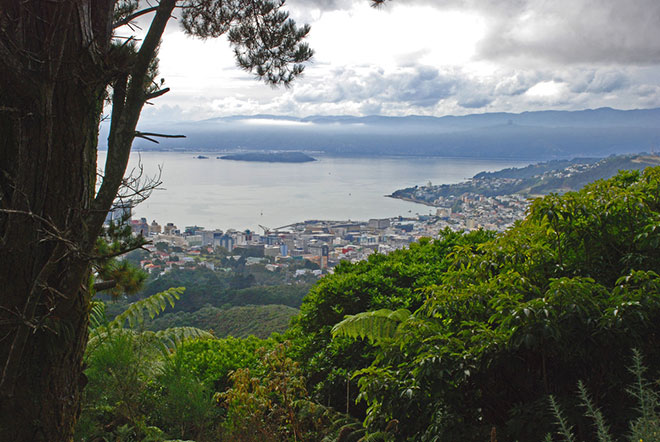
Phillip CapperWellington’s blue spaces, viewed from the green ones.
Overall, the prize for bluest city may have to go to Wellington, New Zealand, whose comprehensive ocean plan Beatley practically gushes over. It features the idea of a “blue belt,” nearly 200 miles of marine reserve around the city where fishing would be prevented, replaced by a snorkel trail. Just as a greenbelt can contain urban sprawl, the blue belt is a way to address ocean sprawl. Wellington’s “Our Living City” plan also incorporates offshore wind farms, a marine education center, and a citizen-science effort to catalogue the local marine biodiversity. Sigh. New Zealand, why do you have to make the rest of us look like such slackers?
But Beatley is only encouraged by these projects, which he seems gaining momentum everywhere — green roofs and rainwater capture in Portland, sustainability-minded aquaponics ventures in New York and Detroit, an exhaustive biodiversity survey in Singapore, a successful protest of harmful coastal development in Australia.
“There’s a potential for fascination and curiosity and wonder, and I think we need more wonder in our lives,” Beatley says. “It doesn’t necessarily mean we have to be out snorkeling — but the knowledge! And the pride of place, too — knowing these things are all part of the home you live in.”
You heard the man: Make yourself at home.

